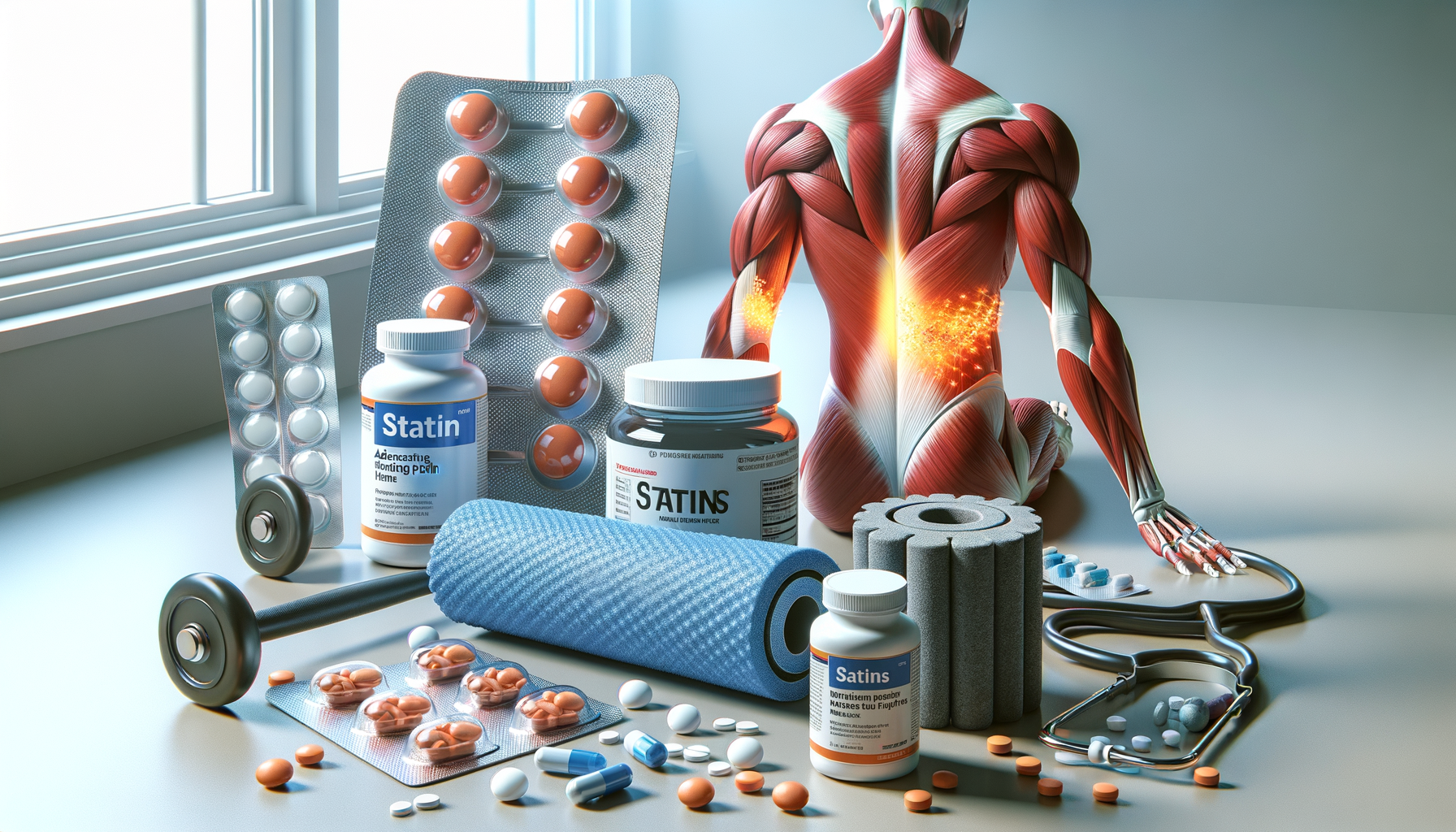Ways to Address Muscle Pain While Taking Statins
Could muscle discomfort be a side effect of taking statins? Understanding potential issues and how they manifest is important. Exploring various ways to manage such experiences can be helpful.

Understanding Muscle Pain and Its Connection to Statins
Muscle pain is a common concern for those taking statins, a class of drugs prescribed to lower cholesterol levels. Statins are highly effective in reducing the risk of heart disease, yet they sometimes come with side effects, including muscle discomfort. Understanding the Common Causes of Muscle Pain Linked to Statins is crucial for patients and healthcare providers alike.
Statins work by inhibiting an enzyme in the liver responsible for cholesterol production. However, this process can also affect muscle cells, leading to pain or weakness. The exact mechanism isn’t entirely understood, but researchers believe that statins may interfere with the production of certain proteins necessary for muscle function. Additionally, genetic factors, age, and the presence of other medical conditions can increase the likelihood of experiencing muscle pain while on statins.
For those experiencing muscle pain, it is important to monitor symptoms closely. Mild discomfort may resolve on its own, but persistent or severe pain should be addressed with a healthcare provider. Understanding the potential causes and maintaining open communication with medical professionals can help manage and mitigate these side effects effectively.
Effective Strategies to Manage Muscle Pain During Statin Therapy
Managing muscle pain while taking statins involves a combination of lifestyle adjustments, medical interventions, and sometimes, changes to medication. Here are some Effective Strategies to Manage Muscle Pain During Statin Therapy:
- Regular Exercise: Engaging in low-impact exercises such as walking, swimming, or yoga can help maintain muscle strength and flexibility, potentially reducing pain.
- Dietary Adjustments: Incorporating anti-inflammatory foods like fish, nuts, and leafy greens can support overall muscle health.
- Medication Review: If pain persists, a healthcare provider might adjust the statin dosage or switch to a different statin.
- Supplements: Some studies suggest that Coenzyme Q10 supplements may help alleviate muscle pain associated with statins, though more research is needed.
It’s essential to approach these strategies under medical guidance to ensure they are safe and effective for your specific health needs. Combining these approaches can lead to a more comfortable experience with statin therapy, allowing patients to continue benefiting from its heart-protective effects.
When to Seek Medical Advice for Muscle Pain Related to Statin Use
While some muscle discomfort is manageable at home, there are instances when it is crucial to seek professional medical advice. Recognizing When to Seek Medical Advice for Muscle Pain Related to Statin Use can prevent more serious complications.
If muscle pain is accompanied by symptoms such as dark urine, fever, or significant weakness, it is important to contact a healthcare provider immediately. These could be signs of a rare but serious condition called rhabdomyolysis, which involves severe muscle breakdown and can lead to kidney damage.
Additionally, if muscle pain significantly interferes with daily activities or persists despite lifestyle changes and medication adjustments, professional evaluation is warranted. A healthcare provider can perform tests to rule out other causes of muscle pain and determine whether a change in medication is necessary.
Prompt attention to these symptoms ensures that any underlying issues are addressed quickly, maintaining both muscle health and the benefits of statin therapy.